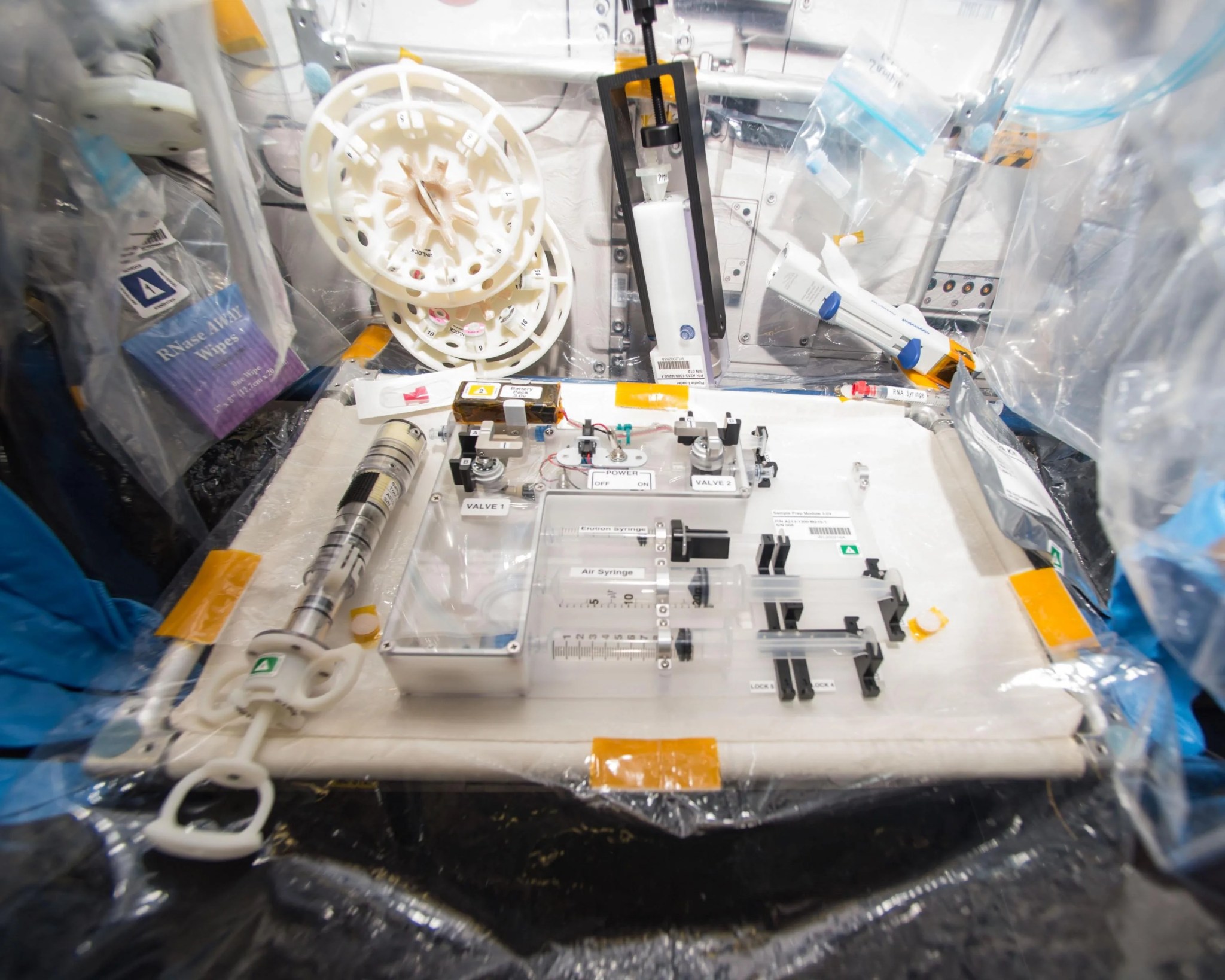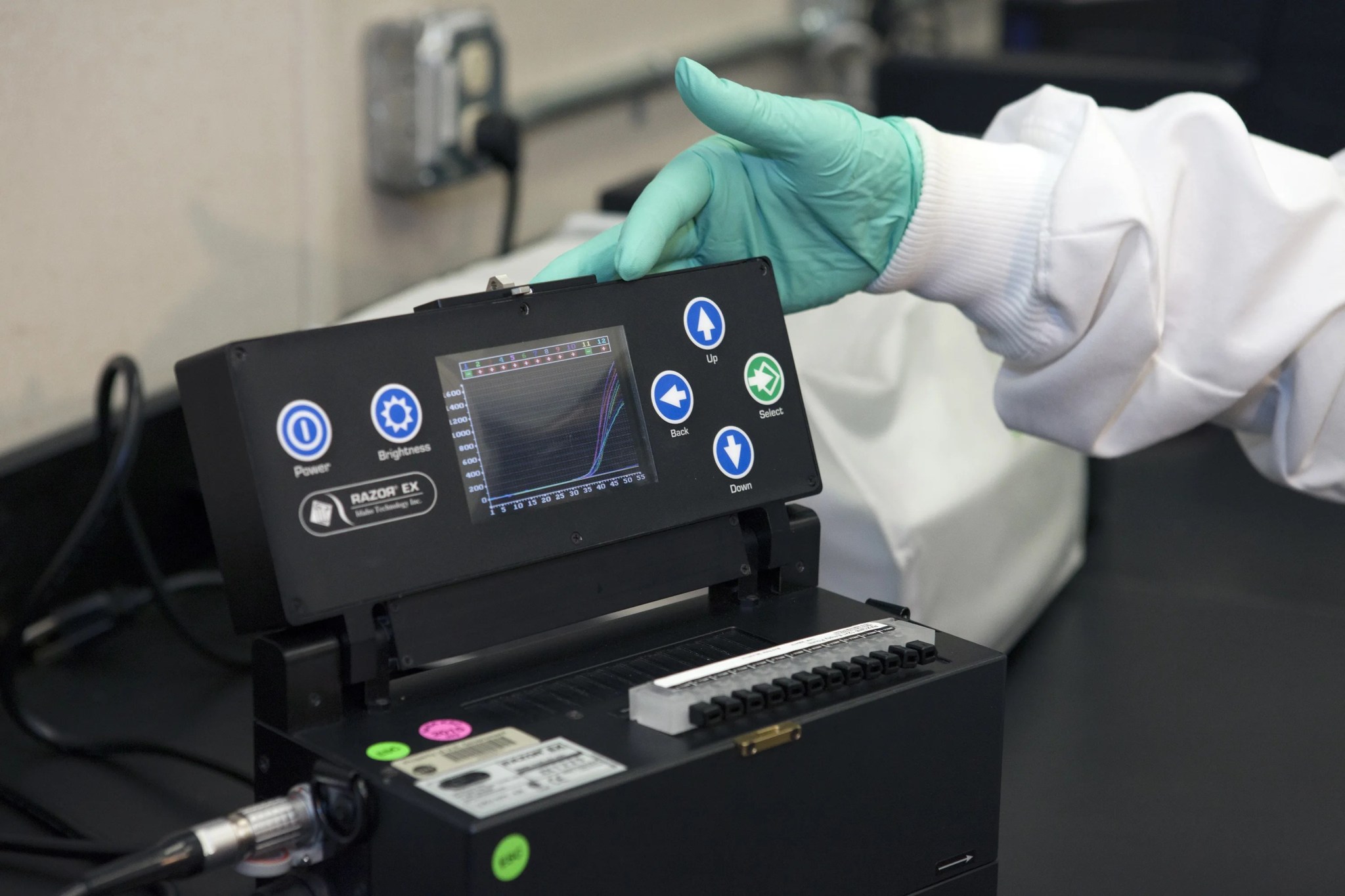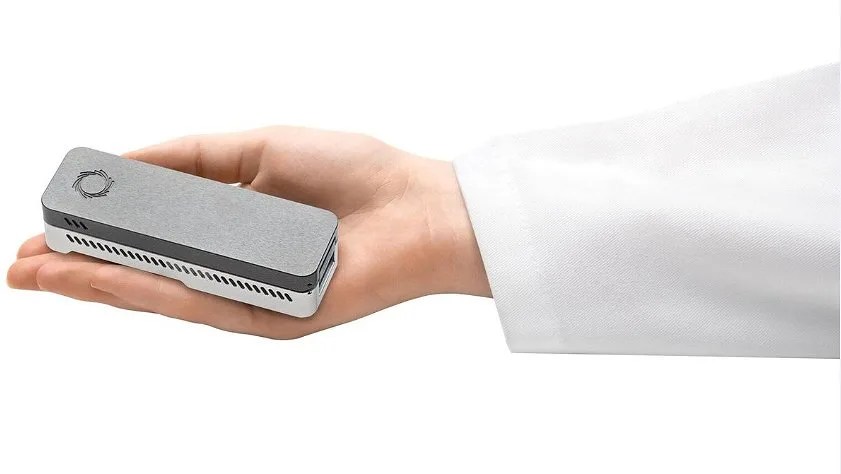Microbiology Program
Hardware
WetLab 2
Wetlab-2 is a research platform for conducting real-time quantitative gene expression analysis aboard the International Space Station. Instead of waiting to fly samples back to Earth, WetLab-2 enables scientists to obtain real-time gene expression data from samples processed and analyzed aboard the space station. WetLab-2 will enable traditional uses of quantitative PCR, such as measuring gene transcription or rapid detection of gene targets that indicate infectious disease, cell stress, changes in cell cycle, growth and development, and/or genetic abnormality. WetLab-2 includes a commercial quantitative PCR instrument (Cepheid SmartCycler), a sample transfer tool for retrieving samples from culturing hardware, and a set of fluidic modules to enable sample preparation work that will be performed by astronaut crew working in a weightless environment. The SmartCycler can perform up to 16 quantitative PCR reactions in parallel, using up to four optical channels to measure fluorescence. The average time to deliver results is less than four hours.
Learn more about Wetlab2:
https://www.nasa.gov/ames/research/space-biosciences/wetlab-2
https://www.nasa.gov/mission_pages/station/research/experiments/1199.html
RAZOR EX
RAZOR EX is a real-time microbial detection system originally developed by the Department of Defense for use by soldiers on the battlefield, as a front-line pathogen diagnostic tool. Onboard the ISS, RAZOR uses polymerase chain reaction (PCR) technology to analyze samples. PCR is a very precise technology in molecular biology used to amplify a single copy or a few copies of a piece of DNA across several orders of magnitude, generating thousands to millions of copies of a particular sequence. RAZOR can deliver biological sample results in less than an hour.
Learn more about RAZOR:
https://www.nasa.gov/feature/new-microbial-monitoring-technology-a-candidate-for-iss-and-beyond
MinION
MinION is a commercially-available DNA sequencing device developed by Oxford Nanopore Technologies and used to identify life forms. The MinION works by sending a positive current through nanopores embedded in membranes inside the device. At the same time, fluid containing a DNA sample passes through the device. Individual DNA molecules partially block the nanopores and change the current in a way that is unique to that particular DNA sequence. By looking at these changes, researchers can identify the specific DNA sequence. NASA’s Biomolecule Sequencer Investigation recently sent samples of mouse, virus, and bacteria DNA to the space station. In addition to sample preparation and DNA sequencing, MinION can extract, prepare, and sequence DNA to identify unknown microbes on orbit. Onboard sequencing makes it possible for the crew to know what is in their environment at any time and take appropriate action—including clean up, disinfection, or using antibiotics to fight a microbial pathogen.
Learn more about MinION and DNA sequencing on the ISS:
https://www.nasa.gov/mission_pages/station/research/news/dna_sequencing
miniPCR
The mini-polymerase chain reaction tool replicates DNA in order to have enough to analyze. PCR technology is used on the ISS to study epigenetic changes and how they affect the human immune system. miniPCR copies targeted pieces of DNA in a process known as polymerase chain reaction (PCR).
Learn more about miniPCR and genes in space:
https://www.nasa.gov/mission_pages/station/research/experiments/explorer/Investigation.html?#id=1656

































